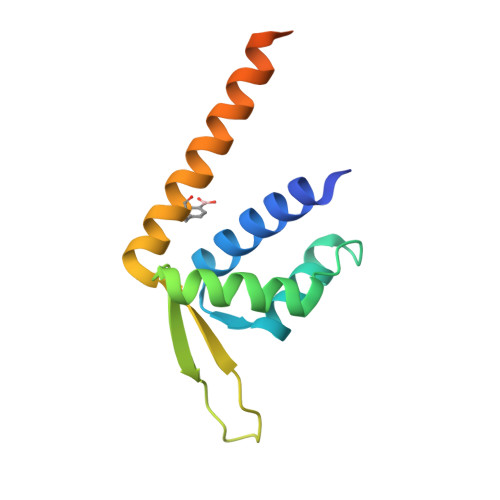Boron catalysis in a designer enzyme.
Longwitz, L., Leveson-Gower, R.B., Rozeboom, H.J., Thunnissen, A.W.H., Roelfes, G.(2024) Nature 629: 824-829
- PubMed: 38720081
- DOI: https://doi.org/10.1038/s41586-024-07391-3
- Primary Citation of Related Structures:
8QDF, 8QDH - PubMed Abstract:
Enzymes play an increasingly important role in improving the benignity and efficiency of chemical production, yet the diversity of their applications lags heavily behind chemical catalysts as a result of the relatively narrow range of reaction mechanisms of enzymes. The creation of enzymes containing non-biological functionalities facilitates reaction mechanisms outside nature's canon and paves the way towards fully programmable biocatalysis 1-3 . Here we present a completely genetically encoded boronic-acid-containing designer enzyme with organocatalytic reactivity not achievable with natural or engineered biocatalysts 4,5 . This boron enzyme catalyses the kinetic resolution of hydroxyketones by oxime formation, in which crucial interactions with the protein scaffold assist in the catalysis. A directed evolution campaign led to a variant with natural-enzyme-like enantioselectivities for several different substrates. The unique activation mode of the boron enzyme was confirmed using X-ray crystallography, high-resolution mass spectrometry (HRMS) and 11 B NMR spectroscopy. Our study demonstrates that genetic-code expansion can be used to create evolvable enantioselective enzymes that rely on xenobiotic catalytic moieties such as boronic acids and access reaction mechanisms not reachable through catalytic promiscuity of natural or engineered enzymes.
Organizational Affiliation:
Stratingh Institute for Chemistry, University of Groningen, Groningen, The Netherlands.















